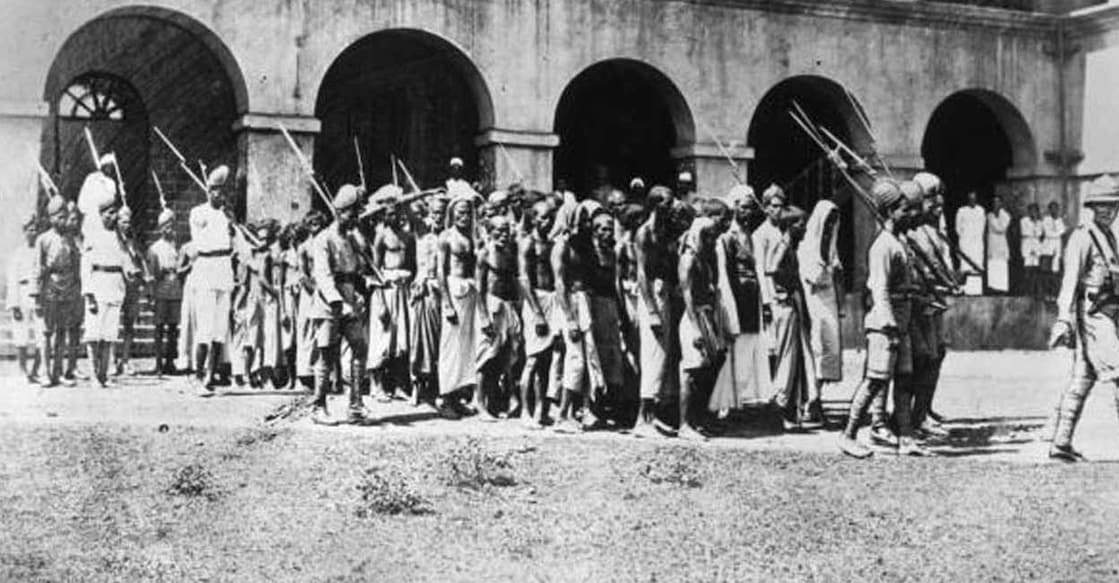Column | What intelligence reports from Kannur in the last days of Raj revealed

Mail This Article
The northern Kerala coastal city of Kannur is mostly known for its Theyyam festivities, golden beaches and, unfortunately, political violence. But being home to a military camp for the Portuguese, Dutch and British, who set up the modern cantonment, the city was once an important intelligence-gathering point for anyone who wanted to control the Malabar region.
Declassified intelligence reports from 1945-46 paint an interesting picture of the city at a time India was on the verge of gaining independence.
The reports, which have been digitised by the National Archives of India, were mainly prepared by British army officers and depict Cannanore (as it was then called) to be a peaceful, if boring, place for the British and Indian troops stationed in the cantonment.
However, there are mentions of political tensions that did not spiral out of control.
“There is a certain amount of unrest here between Congress and Communist personnel,” a report dated June 20, 1946, said, adding that “no serious clashes” had occurred.
The report mentioned a one-day railway strike that occurred a month earlier, which caused the delay of several trains. Another small report made a mention of a lockout strike in a handloom mill on the outskirts of the city.
General camaraderie
According to these reports, the British and Indian army personnel got along well, and they also seemed to mix well with the residents of the town. In the declassified files, there was only one mention of a formal civilian complaint against the military and this involved European tourists in January 1945. The visitors asked for the hotels to “be put out of bounds” to troops as they were allegedly “monopolising the hotel lounges and keeping the wireless on and in full blast until a late hour.” The military refused to pay heed to the complaint.
A common place of entertainment was a mobile cinema which screened English and Hindi films. There are repeated mentions of one Clover Club, where army officers enjoyed their drink, but many reports complained about the lack of proper entertainment avenues for military personnel.
“It is hard to stress the lack of entertainment for the troops,” a report from April 1945 said. “As pointed out in previous S.I.Rs (Security Intelligence Reports), if the troops had somewhere to go for an evening and some means of occupying their time, incidents of V.D. (venereal diseases) in this station would reach their lowest ebb.”
Military personnel would regularly play competitive sports with civilians in the city. “Football and hockey matches have been played and although the matches were keenly contested, the games were clean and spectators impartial,” according to a report.
The officer made an interesting observation about the contests between the army personnel and the civilians: “The Indian civilians in Cannanore are very friendly towards the troops, but they are financially very poor; for example when the B.O.Rs (British Other Rank) play the town team at football, the latter play in dhoties and different coloured shirts.”
Rising food prices, unemployment
The intelligence reports regularly referred to shortages and rising prices of food in Kannur. “Most of the civil population now complain of the rice shortage, although there is no starvation evident in Cannanore,” a report dated May 1946, said. “The price of fish is now very high and out of the question for many of them.”
Other reports stressed how the price of food was much higher in Kannur than further up the coast, and how the civilians directly blamed the presence of the military for it.
By 1946, many Malayali troops who had served in the Second World War came back to Malabar. The British, who knew that the writing was on the wall when it came to their exit, were not keen on absorbing these people into the Indian Army units in northern Kerala.
“There are now very large numbers of ex-soldiers returning to the station,” a February 1946 report said, adding “Very few of whom can find employment.” The officer suggested that there would be further cuts in personnel strength in the cantonment. “Many of the less educated ex-soldiers appear surprised and hurt when they find no job waiting for them,” the report added. This was a problem that contributed to the disturbances in northwest India at the time of the partition of the country. Many ex-servicemen took part in the communal violence that swept across Punjab in 1947. The loss of their livelihood and the struggle to find gainful employment fuelled a lot of anger, which was unleashed on innocent people during the riots.
Fortunately, Kannur and the rest of Kerala were free of the bloodletting that accompanied the departure of the British. This, of course, is a discourse for another occasion.
Written dispassionately, the intelligence reports about Kannur give the reader an authentic picture of life in the city in the last days of the Raj.


